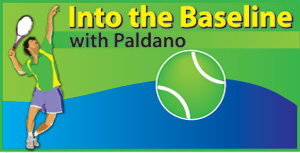The unwanted ‘Ranking’ mania
View(s):Tennis needs course
correction
Until professional bodies WTA and ATP limitrf their ranking to 750 players this year, the ranking mechanism was never ever questioned. In reality, it is inevitable, but to ask “why” Tennis is played now? “Ranking” would be the most probable answer from the majority. Ranking is a method which is definitely not perfect. Its a guide to categorise and place players according to their playing ability in tournament’s draw. This is how it came to being.
It is a mechanics for good players to meet in the latter Rounds of an event and nothing more. Initially, in Tennis, there were Women’s and Men’s Rankings, globally and nationally, called ‘Open Ranking’. Along with that, a very large number indulged in Tennis as a sporting pastime outside the Ranking pursuit. These devoted players have now become the ‘poor relatives’, having no place to play the sport they like. Their bastions were the sports clubs islandwide in Sri Lanka. Most of them are extinct. These activities had a value in development and within society, along with the respect of the world.
In the name of promotion of the game, each nation and the world ranked everything. A juvenile whose Tennis bags are carried by the mother is also ranked. Almost everyone who owns a Tennis racquet has ranking. In many countries, almost every category from under eight to infinity has a ranking.
An unranked junior player from a developed nation will easily beat many of the No.1 ranked player of other nations. How could we respect ranking now? Ranking has become a mania.
Adverse effects
and correction
There are too many junior and juvenile events today. Those ranked even go as the ‘national team’ overseas. This is a picnic for the family and nothing more. An expensive one often regretted later. In many cases, it has left extreme bitterness against Tennis and their national Tennis administration in families. I have experienced this first hand, working professionally in 5 countries, followed it in two continents and found to be the same. Ranking is the biggest contributor for early dropout of the ‘game of Tennis’ by juniors. Age group ranking is an immense negative influence in the development of juniors in any sport.
The restriction on ranking will have to come at national level soon. This will be a correction process and will be good for Tennis. The Good exhibition of the game promotes Tennis. When a Tennis match looks like a bad Tele-drama, there will be no spectators. Junior events often are a bad exhibition of Tennis. Simply because juniors have not accomplished the skill acquiring process yet. Which Grade 6 child is a doctor, lawyer or an engineer? National associations and National development advisors must take notice of this.
World Ranking
In all probability, WTA and ATP ranking is the only one that has the respect of the world. Why? Because these are the only two coming out of un-manipulated open fields. All others are ‘closed’ and heavily subjected to variance in the ranking process. The reason is that simple.
 The professional bodies noticed the development and have fought and groomed their ranking system. It happened by thinking professionally and outside the box, for over 30 years. In the current top 10 in the world Women ranking, Naomi Osaka is No.1 with 9 others, and among the Men, Novak Djokovic is No.1 with 9 others, and they have the respect of the world.
The professional bodies noticed the development and have fought and groomed their ranking system. It happened by thinking professionally and outside the box, for over 30 years. In the current top 10 in the world Women ranking, Naomi Osaka is No.1 with 9 others, and among the Men, Novak Djokovic is No.1 with 9 others, and they have the respect of the world.
Respect in this context means players having exceptional skills and ability. Stopping the ranking at 750 by the professionals is a correction process. Even a good and effective ranking system is taking measures to keep it trustworthy. Nationally, all countries must follow suit.
The difference between a player ranked 500 in the world and and another 2000, is their ‘playing form’ during the match. They will be equal in acquired skills and ability. Players ranked above the top 1,500, defeat many top 500. Juniors, playing form fluctuates very noticeably, almost daily. Body does not sustain playing form forever. Skill and ability will become ‘muscle memory’, being in the game over time, at one point after 21 years of age. Then Tennis will be instinctive and variance in playing form will be minimal, showing consistency. This is true of all skills.
Age of Super Speed
and Endurance
Modern Tennis rackets initiated it and the new-era land USA accelerated it with Cement-Asphalt-paint coated surface. Now the speed is going unchecked. Often unable to cope, players have resorted to unacceptable methods. Rate of burning, playing a high-speed game seldom equates to the rate of recovery in sports. Regulating effort to last is a tactical area.
Speed kills the artistic skills of stroke-making and the magic of ‘touch’. It has made players look like muscle bound show wrestlers, than elegant Sportsperson of the Greek era. Here too, the correction process is taking place. Courts are becoming slower. This year’s Australian Open found the use of ‘slice underspin backhand an effective weapon. Australia’s Ashleigh Bartly overcame much-fancied Maria Sharapova. Chip and charge in layman’s term, is referred to as the sliced ground-stroke which induces reverse spin onto the ball for low bounce, and also slows the flight, giving time to reaching the net to volley. An Australian specialty from the ’50s.
George Paldano, Former int. player; Accredited Coach of German Federation; National coach Sri Lanka & Brunei, Davis-Cup, Federation Cup captain/coach– contact 94 77 544 8880 geodano2015@gmail.com -


